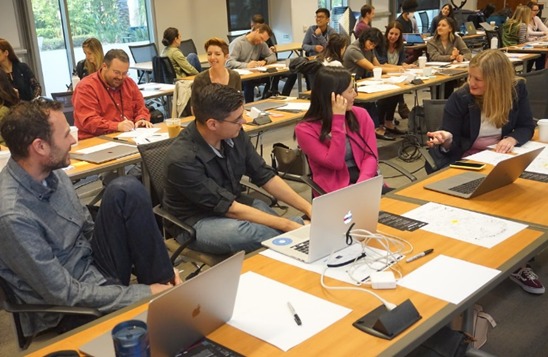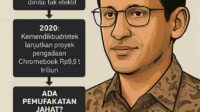The active involvement of consumers or stakeholders is crucial for developing efficient and pertinent solutions in the field of design. The “Participatory Design Workshop” or participatory design workshops are one of the strategies utilized to make this participation a reality.
Diverse stakeholders get together in these workshops to participate on the design process while exchanging ideas, experiences, and viewpoints.
The solutions that are produced using this technique are more specialized, in line with user requirements, and have widespread support. Let’s examine the main ideas and illustrations from this workshop on participatory design.
The Following are the Main Takeaways from the Participatory Design Workshop:
1. Gathering User Insights and Needs
User needs and insight collecting were the primary goals of the initial participatory design sessions. Participants in the design process communicate their experiences, difficulties, and hopes connected to the product or service that will be created. This data serves as the foundation for guiding the future design process.
2. Teamwork and Innovation
Participants in this session are encouraged to actively collaborate and use their creativity. Innovative thinking and ideas are facilitated using a variety of strategies and instruments, including brainstorming, prototyping, and role playing. Participants are encouraged to share their thoughts and views without restriction.
3. Prototyping and Modeling
A participatory design workshop’s creation of a model or prototype that stakeholders may test and evaluate is one of its key objectives.
Participants get to experience firsthand how the suggested solution would function in a real situation through this procedure. Additionally, these prototypes aid in idea clarification and improve dialogue.
4. Assessment and Update
Participants in a participatory design session carefully assess the prototype they just built. They offer suggestions, note necessary adjustments, and aid in the creation of more sophisticated solutions.
Based on this feedback, ongoing improvements are made to the system to guarantee that the final product satisfies the needs and expectations of consumers.
Example of a Participatory Design Workshop
Suppose a team wants to design a mobile application to facilitate foreign language learning. They held participatory design workshops with participants consisting of students, teachers, and language experts.
Workshop Name: Enhancing Public Parks for Community Engagement
Duration: Half-day workshop (4 hours)
Objective: To involve community members in the design and improvement of public parks to promote community engagement and create inclusive spaces.
Challenges in Participatory Design Workshop
Participatory Design Workshops may face several difficulties. First, getting all participants to participate actively can be challenging because some may lack drive or feel awkward expressing their ideas. To promote participation, facilitators must create an inclusive environment.
Second, workshops include participants with various requirements, interests, and views, including project managers, designers, and end users. It’s difficult to handle these disagreements wisely so that everyone involved feels heard.
Thirdly, good collaboration and communication between participants are necessary, but challenges can develop when it comes to understanding one another, remaining on task, and communicating ideas.
For effective communication and collaboration to occur, facilitators must establish a clear framework. Fourth, because workshops are time-limited, it can be difficult to accomplish goals in a short amount of time. effective utilization, prioritizing important tasks, and planning.
Fifth, workshops call for consensus decision-making, which can be challenging. Conflict resolution and inclusive decision-making abilities are required of facilitators. Finally, it can be difficult to translate workshop outputs into actual activities and designs.
Workshops can demand financial, time, and resource commitments that may not be sufficient, creating issues with sustainability and execution.
Openness in Participatory Workshop Design
A crucial stage in the participatory design process is giving people a voice. However, consumers must first comprehend it in this workshop before they can expect sound from them.
Language has to be clarified and ideas need to be supported so that active listeners may also become active contributors. Users must be included in subsequent prototype iterations and testing after the session. This is done to continuously promote user openness.
Technical Participants and non-Technical Participants in the Participatory Design Workshop
The Participatory Design Workshop includes both technical and non-technical participants. To ensure equitable participation from these two elements, an inclusive environment must be established. Once again, effective communication is crucial to producing balanced group work.
To help explain ideas more simply, visual tools like storyboards, sketches, and diagrams can be used. Additionally, individuals who are both technical and non-technical must be actively invited by stakeholders to offer input to one another.
While technical experts can help clarify and improve the technical aspects of design solutions, non-technical participants can offer insightful user viewpoints.
Developer and User Connection
Careful planning is required to improve the Participatory Design Workshop, including figuring out the goals, constraints, involvement strategies, and participants. The workshop’s structure will be considerably clearer and more organized with proper planning.
By fostering an inclusive atmosphere, participants will feel at ease and heard during the training. As a facilitator, you must provide a setting that is welcoming and encourages all viewpoints. The decision can then be reached using the best participative technique.
These techniques include group meetings, brainstorming sessions, prototyping, and modeling. Pick a method that is appropriate for the workshop’s goals. likewise accounting for the multiplicity of stakeholders.
Ensure that every stakeholder attends the workshop. So the importance of a capable facilitator is crucial to the workshop’s success. Facilitators need to be able to control group dynamics, pay attention to opinions, and lead productive dialogues.
The importance of facilitating workshops with the right equipment and technology follows. Social media sites, visualization tools, design software, etc. are some examples. An evaluation can be done after the session is over to help determine what needs to be improved in the subsequent workshop.
How to make Participatory Design Workshops Effective
Effective Participatory Design Workshops require careful planning and clear communication. Communication will improve the organization of the preparations, including the provision of facilities, pertinent activities, and visual support.
Additionally, evaluation and reflection are required so that follow-ups can be made in accordance with the time arrangements that have been jointly arranged.
Participatory Design Workshops can be extremely productive, facilitate effective collaboration, and develop superior ideas that are backed by a variety of stakeholders by using these procedures.
Techniques that can be Learned and Applied in the Participatory Design Workshop
One of the strategies that can be studied and used in the Participatory Design Workshop is interviewing. Users and stakeholders are included in this interviewing technique to learn about their issues, requirements, expectations, and experiences.
This interview, which can be conducted individually or in groups, aims to elicit a more detailed response. Additionally, it is possible to observe the user as they utilize the product, making it simple to comprehend the user’s context and spot issues.
This remark may be made directly or through gathering information. After that, user and stakeholder focus group meetings can be held.
This method allows for the expression of many different viewpoints and thoughts. After that, use the brainstorming technique. This technique involves a group of participants to generate ideas creatively.
Participants are also given the freedom to convey ideas as well as criticism or judgment so that they can create a variety of creative solutions and concepts.
Then, this user test provides the design solution to the user to test and assess. Test participants provided feedback on the usefulness, satisfaction, and challenges they encountered. This user testing helps in validating the design and identifying areas for improvement.
Authors:
- Amos Tristan Dananjaya
- Bryan Kristanto Untaryo
International Civil Engineering Student, Atma Jaya University Yogyakarta
Editor: Salwa Alifah Yusrina
Bahasa: Rahmat Al Kafi















